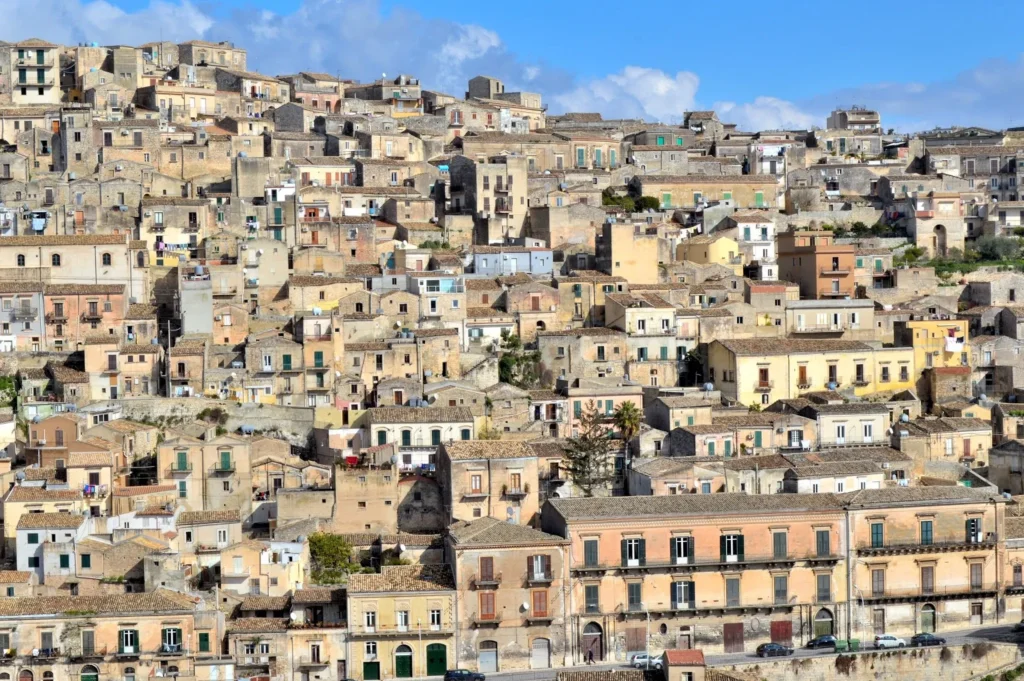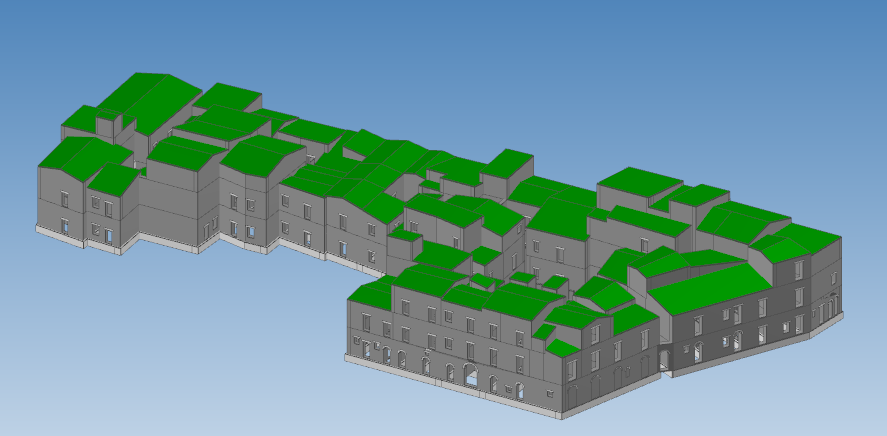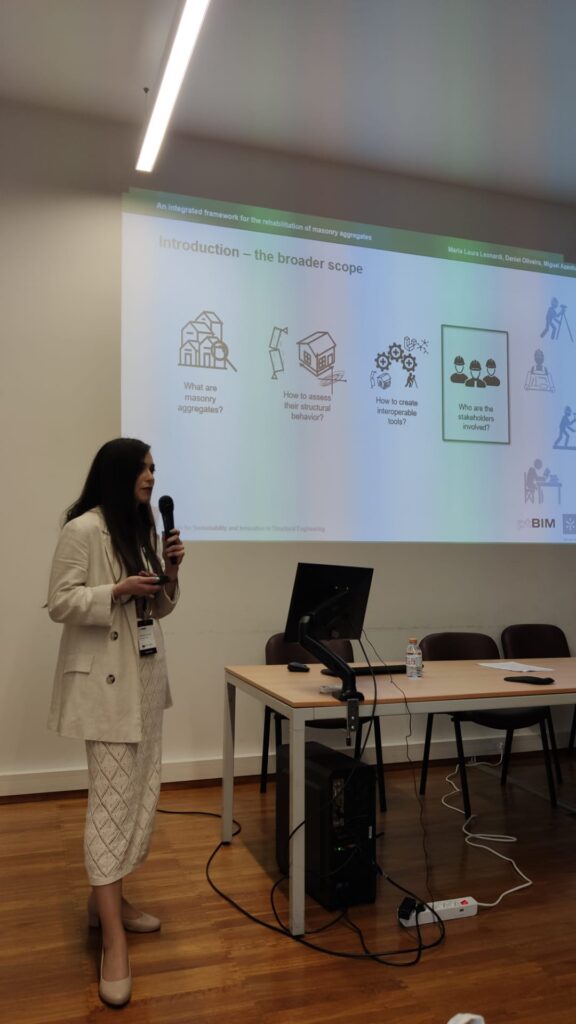Maria Laura's Ph.D.
Rehabilitation of masonry aggregates of historic centers with application to structural safety: from consistent information management in BIM up to advanced supercomputing calculations
The conservation actions for historical small centers are the focus of much debate since their cultural, social, and economic values have been widely recognized as a key asset.
A concern is the low resilience of the traditional residential buildings, caused by their structural characteristics, the construction process, and the inadequate state of preservation. Specifically, the structural safety of the so-called ‘masonry aggregates’ is a major issue, since they represent a consistent percentage of the Southern European building stock and particularly vulnerable to earthquakes.
What are masonry aggregates? Masonry aggregates are groups of adjacent buildings, creating a repetitive pattern in the landscape of historic centers. Indeed, the cultural value of these huge monuments lies in their ability to narrate the customs and traditions of ancient peoples that have evolved over the centuries. Their complexity reflects the different phases of construction that correspond to successive historical periods. Hence, this tells the history of a particular place and the needs of a constantly evolving population.
However, these constructions were left in a state of neglect for a long, then recognized as part of the built heritage, and as economic goods. Their bad state of conservation and their complex features caused by a long construction process are the reason why they are not in the condition of being inhabited as permanent residences, from a structural and comfort point of view.
Marialaura’s PhD endeavors to establish an innovative BIM-centered framework for their revilation. This innovative approach seeks to advance the conventional methodologies by introducing a unified information management system through BIM and augmenting conservation efforts on a larger scale. Additionally, this project leverages the power of supercomputing to efficiently handle the computational demands of sophisticated numerical techniques that have never been executed at such a grandiose scale.
Marialaura’s pioneering research has recently been awarded with a coveted PhD grant from the FCT, securing funding for her endeavor. Her work is being conducted through a collaborative effort between the University of Minho in Portugal and the National Research Center in Italy. Marialaura’s journey began with her Master’s thesis, which was recently honored with the PTBIM conference award.



